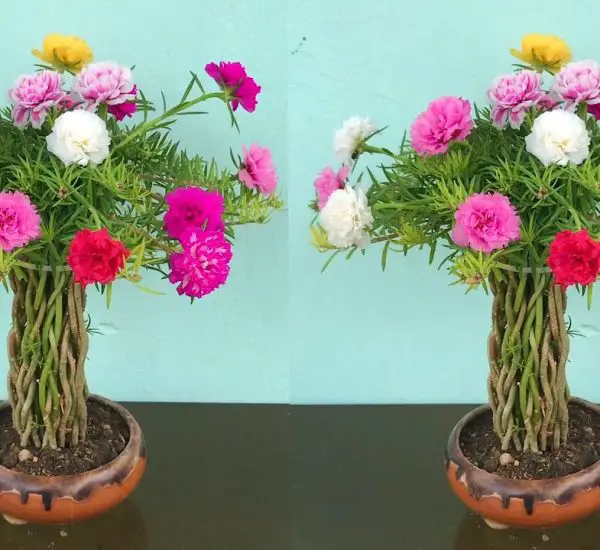Orchids are one of the most popular houseplants, known for their stunning blooms and unique beauty. However, one of the biggest challenges for orchid owners is ensuring that the roots remain healthy and vigorous. Many orchid species require specific care, especially when it comes to water management. In this article, we’ll explore how growing orchids in water can stimulate root growth and help your orchids thrive, leading to abundant roots and beautiful flowers year-round.

Why Watering Orchids Properly is Crucial
Orchids are epiphytic plants, meaning they naturally grow on other plants, trees, or rocks in their native environments, often relying on moisture in the air and periodic rainfall rather than constant soil moisture. Their roots need to be exposed to air to thrive, but they also require hydration to support healthy growth. The key challenge is finding the right balance.
By stimulating orchid roots with water, you can encourage them to develop properly and ensure they have the necessary nutrients to support the plant. This method not only provides hydration but also allows the roots to breathe and absorb oxygen, which is essential for their growth.
The Benefits of Growing Orchids in Water
Growing orchids in water offers several advantages:
- Stimulates root growth: Orchids can develop thick, healthy roots when properly submerged in water.
- Saves space: Water culture (growing plants in water) is a great way to grow orchids without the need for soil.
- Helps with hydration: Orchids grown in water have a constant supply of moisture, promoting lush, vibrant roots.
- Simplifies care: Watering orchids in this way is less frequent compared to traditional soil-based care, making it ideal for beginners.
How to Stimulate Orchid Roots with Water
If you’re considering growing orchids in water or want to stimulate the roots of your existing orchids, here’s a step-by-step guide to ensure success:
1. Choose the Right Container
The container should be transparent so you can observe the roots as they grow. A glass jar or vase is an ideal choice because it allows light to reach the roots, and you can easily monitor water levels. The container should be large enough to allow the roots to expand comfortably but not so large that the orchid’s roots become submerged in too much water.
2. Prepare the Orchid
- Remove the orchid from its current medium: Gently take the orchid out of its pot and remove any old bark, soil, or moss from the roots.
- Inspect the roots: Trim any damaged or rotting roots with sterilized scissors to ensure only healthy roots are left.
3. Submerge the Roots in Water
- Place the orchid in the container: Position the orchid so that the roots are partially submerged in water. Avoid submerging the orchid’s stem or leaves, as they should remain dry to prevent rot.
- Use distilled or purified water: Tap water can contain chlorine or minerals that might harm the orchid’s roots. Opt for distilled or purified water for best results.
- Fill the container with water: Ensure that the roots are submerged up to about a third of their length, but do not allow the water to cover the plant’s stem.
4. Change the Water Regularly
Orchids need clean water to grow healthy roots. Make sure to change the water every 5-7 days to prevent stagnation and algae buildup. Stagnant water can lead to root rot and other issues. This is a simple but essential part of the care routine.
5. Provide Adequate Light
Place the orchid in a location where it will receive indirect light. Orchids thrive in bright but filtered light, such as near a window with sheer curtains. This helps stimulate root growth and encourages healthy development.
6. Monitor Root Growth
As the orchid roots grow, you will notice them becoming thicker and more robust. The process of growing in water encourages faster and more extensive root systems, giving the orchid a strong foundation for blooming.
Tips for Success in Growing Orchids in Water
- Root support: As the roots grow, they may begin to crowd the container. You can gently reposition them or prune them to encourage further growth.
- Temperature: Orchids prefer a stable temperature between 65°F and 75°F (18°C to 24°C). Avoid placing them in drafty areas or near direct heat sources.
- Humidity: Orchids thrive in high humidity. If you live in a dry climate, consider using a humidity tray or misting the orchid roots occasionally.
- Fertilization: Orchids grown in water may need occasional fertilization. Use a diluted liquid orchid fertilizer once a month to give your orchid the nutrients it needs to thrive.
Why This Method Works
Growing orchids in water stimulates root growth by providing a consistent supply of hydration without overwhelming the roots with excessive moisture. The water helps the orchid absorb nutrients, while the transparency of the container allows light to reach the roots, encouraging photosynthesis. As a result, your orchid will develop strong, healthy roots that provide the foundation for lush foliage and long-lasting blooms.
Conclusion
Stimulating orchid roots with water is a simple yet effective method for promoting healthy growth and ensuring your orchid thrives. By following these easy steps and maintaining a proper water routine, you can enjoy beautiful orchids with lush roots and vibrant flowers all year long. This water-based approach is not only easy but also a fascinating way to observe the growth of your orchid as it develops and flourishes in its natural habitat.



